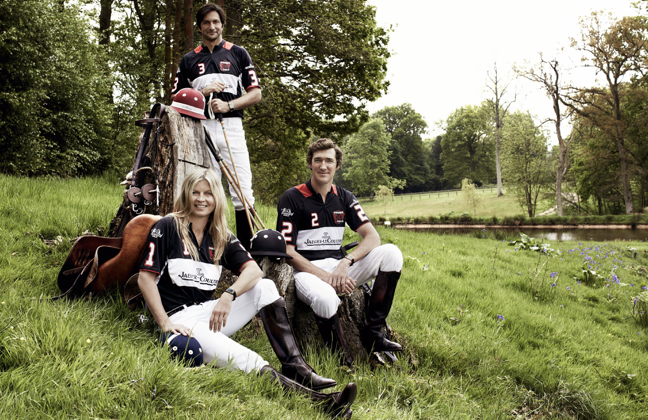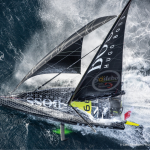
Much has happened since our interview with Eduardo Novillo Astrada in Buenos Aires. The basics of good polo, however, remains the same.
By Camilla Alfthan
SUDDENLY IN 1999 the Novillo-Astrada clan became the focus of attention,when the they made it to the finals of the Argentine Open, and lost by only two goals against Indios Chapaleufú ll.
Alejandro ‘Pikki’ Diaz Alberdi had broken his collarbone, and his replacement never quite managed to enter the match. To most people, the three brothers came out of nowhere, and expectations for the following Abierto were high – however, injured horses and bad weather conditions meant that the Novillo Astradas only made it to the semi-finals, losing by two goals against Adolfo Cambiaso’s La Dolfina.
As it turned out, we had far from seen the last of their Cañada team, named after the polo club, La Cañada; founded by the Novillo-Astradas and, at the time, the largest in Argentina with seventy members.
These days it is the family’s Aguada club which is the talk of the sport with numerous tournaments for all levels, including the traditional La Aguada horse sale.
The first family member to shine on the national polo scene was Julio Novillo-Astrada, who played in the 1930s. Julio held a 5-goal handicap and his son, Eduardo, was a 9-goaler who won the Hurlingham Open and the Tortugas and played the Abierto several times, once making it to the final. Eduardo played with his brother Julio and friends at La Cañada which they had established with a cousin. The club is also where they keep most of their horses, said the eldest brother, Eduardo, when we met during the Abierto in Buenos Aires at the turn of the millenium when there were altogether eight Novillo-Astradas on the fields of play.
Eduardo Novillo Astrada with Clare Milford-Haven and Luke Tomlinson during the British season.
“We started playing when we were very young – about five or six years old. We would stick and ball and ride a lot. We spent our holidays here in Lujan, and also played with our four cousins in the Tortugas country club.”
“Our father would teach us to play, as well as our uncle. We also learned a lot from our groom, Raoul Simerez, who was with the family forever, running the organization.”
“lt’s easier to learn how to play well when you have a good player on the field. We played practice games with teams of 7 to 25-goals, since we were very young. That’s why the young stars get to play so well, because they practise with great talent, and they watch and leam,” said Eduardo who started playing at the Irish Catholic Newman College while competing in the annual Potrillo tournament.
“Our father used to shout at us a lot. He said that we always have to get the man first and then the ball. That’s the golden rule in polo. If you’re looking at the ball trying to get it, the man will get it before you.
But if you worry about him first, you can always get the ball afterwards. All high-goal players can hit the ball very well, so tactics become more important at this level. Also you have to be a very good rider, in order to be a good polo player.
“Just as in a business, you have to know all the levels of the job to be really good.”
For many years we would ride without stirrups, to learn how to use our legs well. I alway say that you have to be a mix of an Indian and an English rider, to combine a natural style with technique.”
Having other interests than polo did not prove to be a problem either. When younger, Eduardo played rugby in the moming and polo in the aftemoon, and then when he was eighteen and had finished school, he opted for polo. He then went on to study business administration at university. Gradually, all brothers improved their handicaps, while getting better horses each year. Their highlight was winning the Triple Crown Open (Tortugas, Hurlingham and Palermo) in 2003 with La Aguada.
In 2014 that was topped when Eduardo won his first match at Palermo with his 14-year old son.
“There are no secrets to being a good player – it is all about consistency,” he said.
“It is a case of playing every week, all year around, with the best people. Some people come to Argentina, and leam for a few weeks and then they leave. But this is impossible; you forget everything that you have learned. Henry Brett, the Gracidas, Mike Azzaro – they all come here to learn for long periods and this has been significant in their progress.
“The way we do it here, is by starting at the bottom. You have to know how to do everything yourself. Our parents don’t give us six horses and a groom – they give us one or two and then we have to manage with that. We take the horses from the paddock ourselves, we feed them, we do everything. We are our own grooms. That’s the only way you can become a good player. Just as in a business, you have to know all the levels of the job in order to be really good. You can’t play high-goal, if you don’t know the basics of good horsemanship.”
For Eduardo and his brothers, polo was always a way of life.
“We fight every ball as if it were the last – this is very characteristic of our family. We have a good defence and we are difficult to beat. We play a lot together and know each other well. That’s a great advantage.” ©
 Eduardo models Jaeger LeCoultre’s famous Reverso watch, originally made for a British polo player in India who in 1931 wanted an unbreakable and reversible watch. Ph. Astrid Munoz
Eduardo models Jaeger LeCoultre’s famous Reverso watch, originally made for a British polo player in India who in 1931 wanted an unbreakable and reversible watch. Ph. Astrid Munoz
Eduardo Novillo Astrada on his toughest adversary, Adolfo Cambiaso :
“Had he been a tennis player or a golfer or a football player, he would be better than Federer, Tiger Woods or Lionel Messi. He has won more than Messi. What other sport do you have someone for more than twenty years having number one status?
He’s amazing. I was very lucky and very unlucky to play against the best. He has the kind of anticipation that means he’s one step ahead of everyone. He reads the game so well. Even if you want to get him, he loses you and gets away from you. He gets the ball no matter what,” he told The Daily Telegraph in July 2015.
EDUARDO…
* Divides his time between Argentina and England, where he was born on October 7th 1972, while his father was playing the polo season in the United Kingdom.
* He is the oldest of six children. Of his younger siblings — Miguel, Javier, Ignacio, Alejandro and Veronica — all five boys became professional polo players.
* His sporting commitments forced him to give up studying economics with only two subjects to go before completing his university degree.
* In 1990, at barely 18 years old, he won his first major prize: the Argentinean Republic Cup.
* In 1999 his team suddenly reached the final of the Argentine Open In Palermo, setting the final touch to a season that had brought numerous victories – including the Triple Crown Open.
* Over the past few years, he has also won the British and the US Opens, the Sotogrande Silver Cup and in 2009 he was a finalist in the US Open Championship.
* He has reached a 10-goal handicap and played on world-famous teams such as the La Cañada, Ellerstina and La Aguada – with which he currently plays with his brothers in Argentina.
* In the United States, he is a member of the Zacara and Las Monjitas teams. In the United Kingdom, he plays each year with the Black Bears.
* He is married to the Puerto Rican photographer and model, Astrid Munoz who photographed him for Jaeger LeCoultre.
* He has three sons who all play polo – Justo, Cruz and Lucio.



